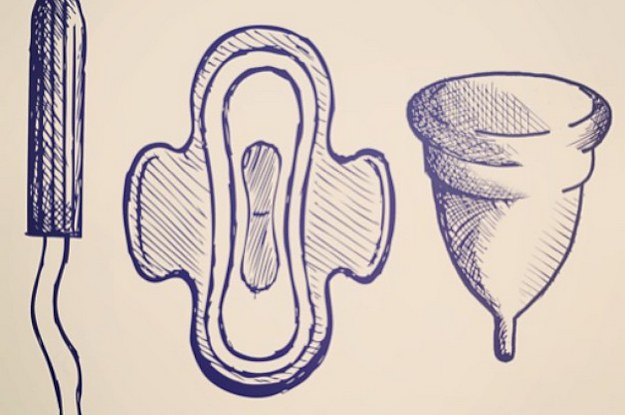Various types of menstrual supplies
When you get your period, you will need to use something to soak up the menstrual blood. There are lots of choices out there, and it may take some experimenting before you find the right product that works best for you.
There are lots of products for taking care of your period. Try different products to find the right ones for you. It is normal to feel nervous or shy about buying pads at first. But getting your period is a normal part of life. If you need any help? Ask your mom, older sister, or someone else you trust which products she likes.
Here’s is a great advice about using few products for your period, to stay safe, always follow the instructions on the packaging and be hygiene after use. And remember to shower or take a bath regularly during your period. Below are few types lets discuss:
Sanitary pads:
Sanitary pads are also known as sanitary napkins or menstrual pads, were one of the earliest forms of feminine hygiene and are still widely used today. This is offered in various lengths and absorbency levels, pads are often preferred by most of the women on light-flow days or for when they might be spotting between periods. Some of the women combine a tampon with a pad for extra protection.
Tampons:
Tampons are since around the 1930s, and they are the most popular choice of feminine protection for women younger than 4. Women often choose tampons for a greater physical freedom during their period. Like sanitary pads, tampons are also-also offered in various sizes and levels of absorbency. Women should change tampons at least every four to eight hours, using the least absorbent type to manage the menstrual flow. However, there is some evidence that women who use tampons may have an increased risk of urinary tract infections.
Reusable, absorbable period panties
These are the newest menstrual product on the market. The crotch is 4 layers thick and absorbs light to medium amounts of menstrual flow. Girls or young women can wear this type of underwear with or without a tampon. However, they are washable and reusable and environmentally friendly.
Non-chlorine bleached all-cotton pads and tampons
These products are available at many natural foods stores, some of the larger supermarket chains, and online. They are a bit more expensive than the regular pads and tampons. They are disposable, so they are not as environmentally friendly as reusable products, but they are not made using chemicals. However, even 100% natural cotton can contain pesticides, so you should be sure that the product you are buying has no chemicals, and it is best to choose a brand made with organic cotton.
Reusable, washable, cloth pads
This will work just like regular disposable pads, but instead of throwing them away after use, you rinse them out, wash them, and use them again. Reusable pads usually come in two parts: a liner and also a liner holder. The liner goes inside the holder, which has wings that snap around the crotch of your underwear to keep it in place.
Menstrual cups:
Menstrual cups have been around as long as tampons. There are two types of menstrual cups: The first is a soft, flexible, disposable cup that resembles a diaphragm. The second is a bell-shaped cup made of rubber or silicone which can be reused after thorough cleaning. Both types of menstrual cups are designed in a manner that they will collect menstrual fluid, rather than absorb it for disposal later.
No matter what kind of pad you choose, it is best to change pads every 3 or 4 hours, even when your flow is not very heavy. Regular changing prevents the buildup of bacteria and removes odor. Naturally, if your period is heavy, you should change your pads more often because they may get saturated more quickly. With all the choices for feminine protection, it is essential that women are educated about their options so that they can better manage their menstrual cycle, rather than being managed by it. It is all a matter of personal preference.
Opt for vaginal wash products to be hygiene when menstruating. Ensure washing your hands before and after adding or changing your product of choice to prevent infections.

